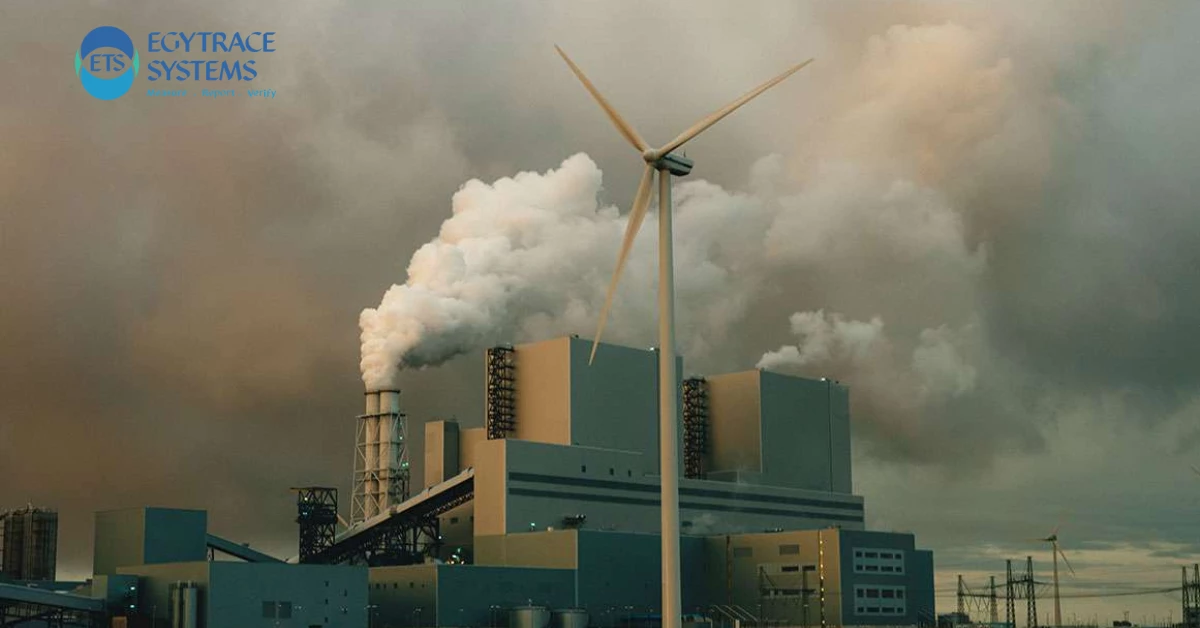How Organizational Boundaries Shape Sustainability Strategies
In sustainability and carbon accounting, organizational boundaries define the limits of a company’s reporting structure. These boundaries determine which operations, subsidiaries, and assets should be included in emissions calculations. Establishing clear organizational boundaries is essential for accurate reporting, regulatory compliance, and achieving sustainability goals.
Businesses, particularly those operating in regions with stringent carbon regulations like the EU Carbon Border Adjustment Mechanism (CBAM), must properly define their organizational and operational boundaries to ensure compliance. EgyTrace helps companies navigate these challenges by providing automated MRV (Monitoring, Reporting, and Verification) solutions, simplifying carbon accounting processes.
Approaches to Defining Organizational Boundaries
There are two main approaches companies use when defining their organizational boundaries for greenhouse gas (GHG) reporting:
1. The Equity Share Approach
- A company accounts for GHG emissions based on its share of equity in an operation.
- If a company owns 40% of a joint venture, it reports 40% of that venture’s emissions.
- Suitable for businesses where financial control is distributed among multiple stakeholders.
2. The Control Approach
Under this approach, companies define organizational boundaries based on control, which can be either:
- Financial Control: A company accounts for 100% of emissions from operations it financially controls, regardless of ownership percentage.
- Operational Control: A company reports emissions from operations where it has the authority to implement policies related to emissions reduction.
Organizations must select an approach that aligns with regulatory requirements and internal sustainability strategies.
The Importance of Organizational Boundaries in Sustainability Reporting
Setting precise organizational boundaries is vital for:
- Ensuring transparent and accurate GHG reporting.
- Aligning with global sustainability standards such as the Greenhouse Gas Protocol.
- Supporting compliance with frameworks like the EU Carbon Tax.
- Providing stakeholders with reliable emissions data to make informed decisions.
Understanding Scopes in Carbon Accounting
Once organizational boundaries are established, companies must categorize their emissions into three scopes:
1. Scope 1: Direct Emissions
- Emissions from owned or controlled sources, such as company-owned vehicles and manufacturing facilities.
2. Scope 2: Indirect Emissions from Energy Use
- Emissions generated from purchased electricity, steam, heating, and cooling consumed by the organization.
3. Scope 3: Indirect Emissions in the Value Chain
- Emissions from sources not owned or directly controlled by the company, such as business travel, supplier emissions, and product lifecycle impacts.
How EgyTrace Supports Businesses in Defining Organizational Boundaries
EgyTrace specializes in helping businesses manage organizational boundaries and carbon reporting through digital automation. Our MRV system ensures seamless tracking of emissions, providing businesses with accurate insights for regulatory compliance and sustainability planning.
By leveraging advanced digital solutions, EgyTrace simplifies carbon accounting, allowing organizations to focus on reducing their carbon footprint while meeting global compliance standards.
Conclusion
Defining organizational boundaries is a fundamental step in carbon reporting and sustainability efforts. A well-structured boundary-setting approach ensures transparency, compliance, and accountability in emissions management. Whether a company follows the equity share or control approach, integrating a robust reporting system like EgyTrace’s MRV can streamline the process and enhance sustainability performance.
Looking to refine your sustainability reporting? EgyTrace offers cutting-edge solutions to help you stay ahead in the evolving regulatory landscape. Get in touch today!

